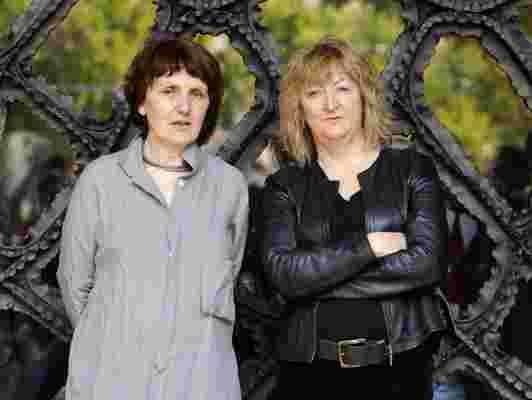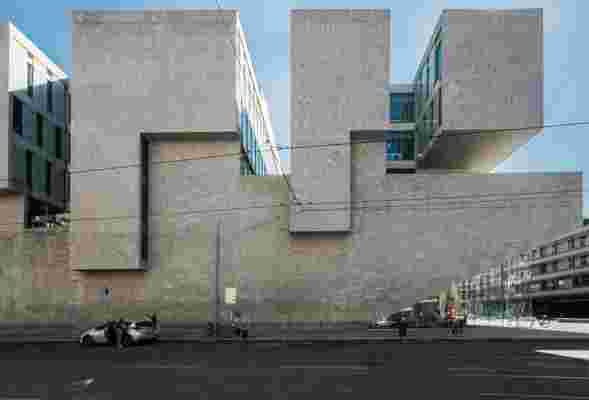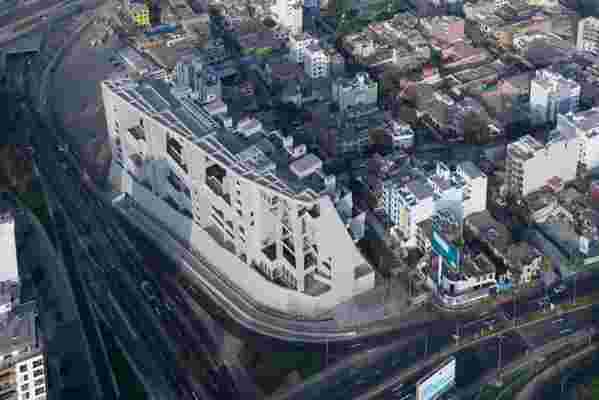In the world of architecture, there is no award more well-known than the annual Pritzker Architecture Prize. And while some readers will be forgiven if they’ve never heard of this year’s winners—Yvonne Farrell and Shelley McNamara of Dublin, Ireland—their ingenious work may shed light on the path architecture should take in the 21st century. From the Universidad de Ingeniería y Tecnología (UTEC) in Lima, Peru ( which won the 2016 RIBA International prize ) to the Universita Luigi Bocconi in Milan, Italy ( winner of the 2008 World Building of the Year ), Farrell and McNamara have amassed a body of work that, while it may not have turned them into household names, surely caught the attention of the Pritzker’s jury members .

Shelley McNamara (left) and Yvonne Farrell (right), winners of the 2020 Pritzker Prize.
Both born in Ireland, Farrell and McNamara first met in the early 1970s while students at the University College Dublin. In 1978 the duo formed Grafton Architects , a firm that specializes in designing university buildings and, as recently as 2018, curated the 2018 Venice Architecture Biennale. With the announcement of Farrell and McNamara as the 2020 recipients, their names will now appear along past Pritzker Prize winners: Frank Gehry, I.M. Pei , Zaha Hadid, Philip Johnson, Oscar Niemeyer, and Norman Foster, among others. Today’s announcement also means, of course, that it will be yet another year until other major architects such as Elizabeth Diller and Ricardo Scofidio, David Adjaye, Santiago Calatrava, Daniel Libeskind, and David Chipperfield can lay claim to the elusive prize.

The Universita Luigi Bocconi University School of Economics, which was designed by Grafton Architects and was the winner of the 2008 World Building of the Year.
Yvonne Farrell and Shelley McNamara’s designs are quite different from several previous laureates such as Frank Gehry and Zaha Hadid. As with any major global award, the Pritzker Prize can celebrate a global trend, a cultural critique, or aspirations for the future. Where does this place Farrell and McNamara? If, for example, one were to look at a Gehry-designed building, the very texture of it would seem to change by the minute, a phenomena produced by a moving sun reflecting off of a titanium surface (Gehry won the award in 1989, a time when postmodern architecture was finding its stride). Hadid’s designs feature verbose swoops that seem to defy gravity, and in the opinion of at least some critics, the antithesis of egalitarian architecture (the late Iraqi-born architect, who won in 2004, saw an early rise that was in tandem with the strong global economy of the 1990s). By comparison, Farrell and McNamara’s designs tend to be big, accessible structures that fit creatively into non-prescriptive spaces. What’s more, their practice leans into the growing practice of eco-friendly architecture. And perhaps no design of theirs better epitomizes this vision than UTEC, the university of engineering and technology in Lima.

An aerial view of the UTEC structure shows the difficult terrain and space in which Farrell and McNamara constructed their design.
It’s best to first study the plot of land on which Farrell and McNamara constructed their UTEC design before analyzing the building itself. The footprint is an awkward area that straddles the curve of a major highway and a neighborhood of variously sized apartment buildings. Farrell and McNamara embraced the challenge. Their response was to mold the building’s north façade into a man-made cliff (reminiscent of Machu Picchu) that effectively, and ingeniously, cut off much of the highway noise from reaching the classrooms on the building’s south side. A verdant rooftop was designed so that vegetation will eventually overflow and cover the “cliff side” of the building, further hiding the architects’ hands within the highly urbanized space. The interior of the building is open, allowing students and faculty members to enjoy the breeze produced by the nearby Pacific Ocean, reducing the need for air conditioning.
The interior of the UTEC building allows for cool air to flow in from the nearby ocean.
By using a set of difficult variables to their advantage, the architects proved their spatial imagination. The vertical campus evokes the grandeur and freedom of brutalism, while adding an interior of Escher-like stairwells and hallways. In other words, Shelley McNamara and Yvonne Farrell absorbed elements of the past and turned it into something with their own unique vision. It is for their attitude of designing for a specific place, their consideration of the environment, and their ability to be cosmopolitan while embracing the heritage of each location that others in the field should study this duo as we venture further into the 21st century.
The ultimate resource for design industry professionals, brought to you by the editors of Architectural Digest
In a male-dominated industry such as architecture, the fact cannot be overlooked that Yvonne Farrell and Shelley McNamara are the fourth and fifth women to win the Pritzker Prize in its 41-year history. Zaha Hadid, the first-ever female Pritzker winner, once quipped that architecture was about sheltering people. “But it’s also about pleasure,” she added. If architecture is, at least partially, a performance of public entertainment, it’s long overdue that we have more female actors onstage.
